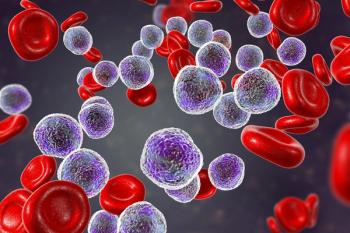
- Oncology Vol 28 No 1S
- Volume 28
- Issue 1S
(P060) Evaluation of 4D-CT Acquisition Methods Designed to Reduce Artifacts
Four-dimensional computed tomography (4D-CT) is used to account for respiratory motion in radiation treatment planning, but image artifacts resulting from the acquisition and postprocessing limit its accuracy.
Sarah J. Castillo, MS, Richard Castillo, PhD, Edward Castillo, PhD, Peter Balter, PhD, Tinsu Pan, PhD, Geoffrey Ibbott, PhD, Brian Hobbs, PhD, Thomas Guerrero, MD, PhD; UT Health Science Center; UT MD Anderson Cancer Center; Rice University
Introduction: Four-dimensional computed tomography (4D-CT) is used to account for respiratory motion in radiation treatment planning, but image artifacts resulting from the acquisition and postprocessing limit its accuracy.
Methods: We investigated the efficacy of three experimental 4D-CT acquisition methods to reduce artifacts in a prospective institutional review board (IRB)-approved study. Eighteen thoracic patients scheduled to undergo radiation therapy (RT) received standard clinical 4D-CT scans, followed by each of the alternative 4D-CT acquisitions: (1) data oversampling, (2) beam gating with breathing irregularities, and (3) rescanning the clinical acquisition acquired during irregular breathing. Relative values of a validated correlation-based artifact metric (CM) determined the best acquisition method per patient. Each 4D-CT scan was processed two ways: by clinical standard phase sorting and by extended phase sorting by optimization of the quantitative artifact metric (CM sorting).
Results: The CM-sorted oversampling acquisition achieved the lowest artifact presence among all acquisition and sorting combinations-a 38% reduction from the phase-sorted clinical acquisition. The CM-sorted oversampling and gating acquisitions both resulted in significant artifact reductions from the CM-sorted clinical (21% and 16%, respectively) and rescan (39% and 36%, respectively) acquisitions, with no significant difference between them. The gating acquisition achieved the highest artifact reduction among phase-sorted acquisitions but was not significant. The rescan acquisition resulted in a significantly higher artifact presence than all other acquisitions in each sorting technique.
Conclusions: CM-sorted oversampling acquisition reduced artifact presence from the clinical phase-sorted acquisition to the largest degree, although both the gating and oversampling acquisitions can significantly reduce artifact presence in 4D-CT image sets when alternative quantitative correlation-based sorting is applied.
Articles in this issue
Newsletter
Stay up to date on recent advances in the multidisciplinary approach to cancer.


















































































